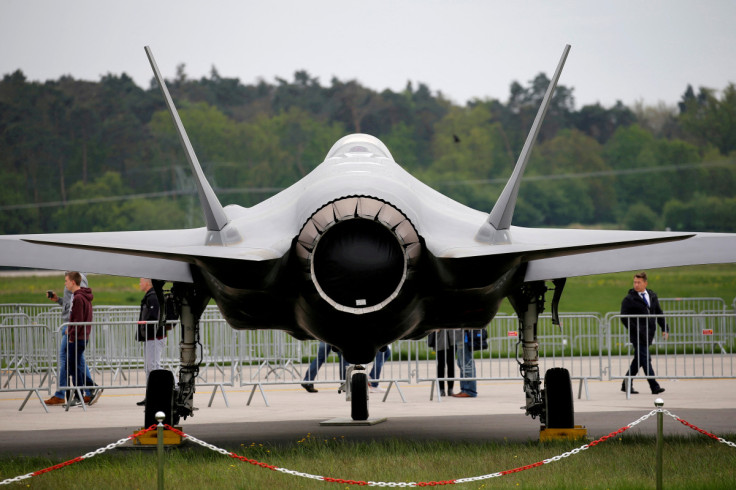Lockheed Martin Attracts More Investors Amidst Continued Defence Deals, Mars Mission Strategic Plan

Amidst rising geopolitical tensions and increased interest from nations to boost their defence spending, Lockheed Martin is seeing itself once again as another 'winner' with more investors taking interest in their stock.
This follows a series of recent transactions the global aerospace and defence company did, which ranged from coming up with a plan to 'save' a mission to Mars to various contracts with armed forces globally.
Strong Investor Interest–But What Lies Ahead?
Lockheed Martin is drawing strong investor interest, according to Zacks Equity Research, which spotlights its enduring fundamentals and potential upside. The aerospace and defence giant recently posted an earnings 'surprise' in October, boosting its share price.
Geopolitical tensions—in Europe, the Middle East, and East Asia—are expected to sustain elevated government defence spending, benefitting the firm's robust program pipeline. Furthermore, a healthy US jobs market and optimism around potential future interest rate cuts could enhance investor appetite for the stock.
However, concerns persist: any US defence budget cuts or a downturn in F‑35 procurement may pressure earnings. Overall, the outlook remains cautiously optimistic, supported by firm contract wins and favourable macroeconomic conditions.
Saving NASA's Upcoming Mars Mission
Recently, Lockheed Martin has unveiled a bold strategy to 'rescue' NASA's Mars Sample Return (MSR) mission by offering a streamlined, modular architecture for under $3 billion (£2.20 billion)—nearly half the current $7–11 billion estimate (around £5.14–8.08 billion).
'MSR represents the biggest bang for the science buck,' said Whitley Poyser, Lockheed Martin's Director of Deep Space Exploration. 'With our 50 years of Red Planet mission experience, we have demonstrated that we can successfully navigate the technical complexities required while staying on budget and schedule, reducing the need for government oversight.'
Their plan leverages proven hardware, including a scaled-down lander based on the InSight design, a compact Mars Ascent Vehicle, and a lean Earth-return capsule. Moreover, this fixed‑price approach caps cost overruns, shifting financial risk away from NASA.
A Multitude of Clients this Year
In March this year, its Sikorsky unit struck a hundreds‑of‑millions‑dollar deal with the Israeli Ministry of Defence to equip 12 CH‑53K 'Pere' helicopters with Israeli avionics and systems. It also secured a $4.94 billion (£3.63 billion) IDIQ award from the US Army to produce Precision Strike Missiles (PrSM).
Additionally, earlier this summer, Sweden selected its next-generation TPY-4 ground-based radar to enhance long-range surveillance. Domestically, Lockheed scored a nearly $3 billion (£2.20 billion) extension on its Aegis Ballistic Missile Defence engineering contract.
On the other hand, the company also shipped the first AN/SPY-7 (V)1 long-range radar antenna to the Japanese Ministry of Defence, bolstering the country's Aegis-based missile defence capabilities in the Indo-Pacific. Earlier, Lockheed delivered a total of 110 F-35 fighter jets to the US and allied nations in 2024, reinforcing its status as a cornerstone supplier to Japan's self-defence forces.
Sustained Growth Despite Turbulence
Lockheed Martin's stock has seen recent turbulence, dipping as much as 4.2% following the Pentagon's reduction in F‑35 orders. However, it remains supported by upbeat Q1 earnings and strong analyst upgrades, including a move to 'Outperform' by Robert W. Baird with a $540 (£396.85) price target.
Its moderate volatility—evidenced by a controlled ATR—offers stability in a defensively oriented portfolio. Looking ahead, continued geopolitical uncertainty and sustained defence budgets could reinforce investor confidence.
However, any further cuts to flagship programs, such as the F-35, or tariff disruptions may temper these gains. Overall, the outlook remains cautiously optimistic, bolstering trust in Lockheed's resilience.
© Copyright IBTimes 2025. All rights reserved.




















